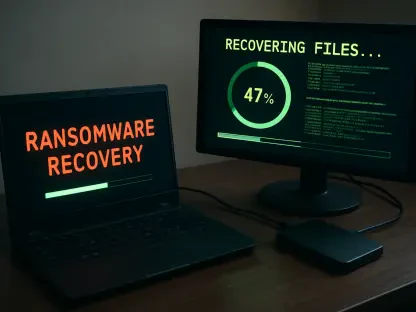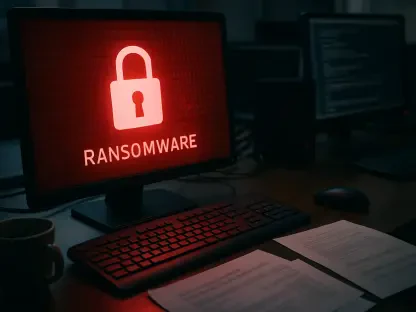This how-to guide aims to equip IT administrators, cybersecurity professionals, and organizations with the knowledge to defend against a sophisticated SEO fraud campaign orchestrated by a Chinese-speaking cybercrime group tracked as UAT-8099. By following the detailed steps and insights provided, readers will learn how to identify vulnerabilities in Internet Information Services (IIS) servers, recognize the tactics used by this group, and implement robust security measures to prevent exploitation. The purpose of this guide is to highlight the critical need to protect trusted infrastructure from being manipulated for illicit purposes, such as redirecting mobile users to unauthorized ads and illegal gambling sites.
The importance of this guide cannot be overstated, as IIS servers are often integral to the operations of universities, tech firms, and telecom providers across countries such as India, Thailand, Vietnam, Canada, and Brazil. These servers, known for their reliability, have become prime targets for cybercriminals seeking to manipulate search engine results for financial gain. Understanding the attack methods employed by UAT-8099 offers a pathway to safeguarding critical systems and maintaining user trust in online environments.
With mobile internet usage continuing to dominate globally, the stakes are higher than ever to secure systems against threats that exploit smartphone users. This guide breaks down the multi-stage attack chain used by UAT-8099, providing actionable steps to counter each phase of their operation. By staying informed and proactive, organizations can mitigate the risks posed by such calculated cybercrime activities and protect their digital assets from being leveraged for fraud.
Understanding the Threat Landscape of IIS Exploitation
Before diving into specific defensive strategies, it’s crucial to grasp why IIS servers have become attractive targets for groups like UAT-8099. These servers often host sensitive and critical data for reputable organizations, lending them an air of trustworthiness that cybercriminals exploit to deceive users. Their widespread use across various sectors makes them a gateway to a large audience, ideal for SEO fraud schemes that manipulate search rankings and redirect traffic.
The exploitation of IIS servers is not merely a technical issue but a strategic one, as attackers aim to capitalize on the servers’ established credibility. Once compromised, these systems can be used to push fraudulent content that appears legitimate to unsuspecting users, particularly those accessing the internet via mobile devices. This trend underscores the need for heightened vigilance among server administrators to prevent their infrastructure from being weaponized.
Moreover, the global reach of affected servers amplifies the potential impact of such attacks. With targets spanning multiple continents, the ripple effects of a single breach can undermine trust in digital platforms worldwide. Recognizing this broader context is essential for organizations aiming to implement effective countermeasures against the evolving tactics of cybercrime groups.
Step-by-Step Guide to Defend Against UAT-8099’s SEO Fraud Tactics
Step 1: Assess and Secure Server Vulnerabilities
Begin by conducting a thorough audit of all IIS servers to identify potential weaknesses that could be exploited. Use automated scanning tools to detect misconfigurations, outdated software, or unpatched vulnerabilities that attackers might target. Regular vulnerability assessments are vital to staying ahead of scanning tactics employed by threat actors searching for entry points.
Focus on tightening server configurations by disabling unnecessary services and ensuring that only essential ports are open. Apply the principle of least privilege to limit access to sensitive areas of the system. By proactively addressing these flaws, the likelihood of an initial breach can be significantly reduced, thwarting early-stage attacks before they escalate.
Document and prioritize findings from vulnerability scans to address critical issues first. Establish a routine schedule for these assessments to ensure continuous monitoring. This ongoing diligence helps in maintaining a fortified defense against persistent scanning efforts by groups looking to exploit overlooked weaknesses.
Step 2: Monitor for Unauthorized Web Shell Uploads
Implement monitoring solutions to detect the presence of web shells, which are often used for reconnaissance and data collection in the early stages of an attack. Configure intrusion detection systems to alert on suspicious file uploads or unusual activity on the server. Early detection of such tools can prevent deeper penetration into the network.
Ensure that file integrity monitoring is in place to track changes to critical system files. Any unauthorized modifications should trigger immediate investigation to determine if a web shell has been deployed. Limiting write permissions on key directories can also hinder attackers from uploading malicious scripts.
Educate IT staff to recognize signs of reconnaissance activities, such as unexpected network mapping or system information queries. Establishing a baseline of normal server behavior aids in identifying anomalies that could indicate an intrusion. Swift response to these red flags is essential to disrupt the attack chain at this stage.
Step 3: Prevent Privilege Escalation and RDP Activation
Secure user accounts by disabling default or guest accounts that could be exploited for privilege escalation. Enforce strong password policies and multi-factor authentication to protect against unauthorized access. Regularly review account privileges to ensure that only necessary permissions are granted to users.
Monitor for changes in account settings, especially attempts to enable remote desktop protocol (RDP) access. Restrict RDP to specific IP addresses and implement network-level protections like firewalls to block unauthorized connections. These measures can prevent attackers from gaining sustained control over compromised systems.
Conduct periodic security training for staff to recognize phishing attempts or social engineering tactics that might lead to credential theft. Simulated exercises can prepare teams to respond effectively to potential escalation attempts. A well-informed workforce is a critical line of defense against such sophisticated threats.
Step 4: Block Persistence Mechanisms Like VPN and Proxy Tools
Deploy endpoint detection and response solutions to identify and block unauthorized VPN or proxy tools such as SoftEther VPN or FRP reverse proxy. Regularly update security software to recognize signatures of these tools, which are often used to maintain long-term access to compromised servers.
Restrict outbound traffic to known malicious IP addresses or domains associated with persistence mechanisms. Network monitoring tools can help detect unusual data flows that might indicate the presence of backdoors. Limiting such communications disrupts the ability of attackers to retain control over systems.
Collaborate with cybersecurity teams to share intelligence on emerging persistence techniques. Staying updated on the latest tools and methods used by threat actors ensures that defensive strategies remain relevant. This proactive approach helps in dismantling persistent access points before they can be fully exploited.
Step 5: Detect and Remove BadIIS Malware
Utilize advanced antivirus and anti-malware solutions to detect and remove variants of BadIIS malware, which is designed to redirect mobile users to fraudulent content. Ensure that security tools are updated with the latest threat definitions to catch evolved strains with low detection rates on platforms like VirusTotal.
Analyze server logs for signs of SEO manipulation, such as unexpected traffic redirects or unusual user agent strings targeting mobile devices like Android and iPhone. Isolating affected systems promptly minimizes the spread of malware and limits damage to end users. Quick action is key to preserving server integrity.
Engage with threat intelligence services to stay informed about new malware variants and their characteristics, including code changes aimed at evading detection. Understanding these updates, such as the presence of simplified Chinese debug strings in recent samples, aids in crafting targeted defenses. Continuous learning is crucial to counter evolving threats.
Step 6: Protect Against Rival Threat Actors
Strengthen server security by implementing measures to deter other cybercriminals from targeting already compromised systems. Use deception technologies like honeypots to mislead rival actors and gather intelligence on their tactics. This approach can provide valuable insights into broader threat landscapes.
Harden server environments by encrypting sensitive data and restricting access to critical resources. Regularly update security protocols to address emerging threats from competing groups seeking to exploit the same infrastructure. A robust defense posture discourages secondary attacks on compromised systems.
Maintain a detailed incident response plan to address potential conflicts with other threat actors. Ensure that recovery processes are well-documented and tested to restore systems swiftly if a rival group attempts to interfere. Preparedness in this area enhances overall resilience against multifaceted cyber threats.
Key Insights from the UAT-8099 Campaign
Several critical lessons emerge from analyzing the attack strategies of UAT-8099. Vulnerabilities in IIS servers often serve as initial entry points, highlighting the need for rigorous patch management. The multi-stage escalation process, supported by advanced tools like SoftEther VPN and FRP, demonstrates the importance of disrupting persistence early. Updated BadIIS malware variants with low detection rates underscore the necessity for cutting-edge detection tools. Targeting mobile users reflects a strategic focus on maximizing reach and financial gain. Finally, defensive tactics to protect compromised infrastructure reveal the competitive nature of cybercrime, necessitating comprehensive security measures.
These insights emphasize that a layered defense approach is essential to counter sophisticated campaigns. Organizations must prioritize continuous monitoring and threat intelligence to stay ahead of evolving tactics. Addressing each phase of the attack chain individually strengthens overall resilience against similar threats.
The broader implications of such campaigns suggest a growing trend of exploiting trusted infrastructure for illicit gains. As mobile usage continues to rise, attackers will likely refine their focus on smartphone users, posing ongoing challenges to online security. Adapting to these shifts requires forward-thinking strategies and collaboration across industries.
Broader Impact on Cybercrime Trends
The tactics employed by UAT-8099 reflect a troubling shift in cybercrime toward leveraging reputable systems for deceptive purposes. Trusted infrastructure, once a symbol of reliability, is increasingly weaponized to push fraudulent content, undermining confidence in digital platforms. This trend poses significant risks to organizations that rely on such systems for their operations.
A notable aspect of this campaign is the deliberate targeting of mobile users, capitalizing on the widespread adoption of smartphones for internet access. This strategic focus amplifies the reach of SEO fraud, as mobile traffic often surpasses desktop usage in many regions. Protecting this user base demands innovative approaches to security that account for device-specific vulnerabilities.
Looking ahead, the cybersecurity community faces the challenge of combating increasingly sophisticated groups with access to advanced tools and techniques. Enhanced protocols, international cooperation, and investment in research are necessary to address these evolving threats. Staying proactive in this dynamic landscape is the only way to safeguard critical infrastructure from future exploitation.
Final Thoughts on Strengthening Defenses
Reflecting on the efforts to counter the UAT-8099 campaign, the detailed steps taken to secure IIS servers proved instrumental in mitigating the risks of SEO fraud. Each phase of defense, from vulnerability assessments to malware detection, played a crucial role in disrupting the attack chain. Organizations that implemented these measures gained valuable ground in protecting their systems.
Moving forward, the focus shifted to adopting more advanced threat intelligence and fostering collaboration across sectors to anticipate similar threats. Exploring partnerships with cybersecurity experts and investing in employee training emerged as key next steps to build a more resilient defense. These actions aimed to address not just current vulnerabilities but also future challenges in the ever-changing cyber landscape.
Ultimately, the battle against sophisticated cybercrime groups required a commitment to continuous improvement and adaptation. Organizations were encouraged to delve into emerging technologies like artificial intelligence for threat detection and to participate in global forums for shared learning. These initiatives promised to fortify defenses and ensure a safer digital environment for all stakeholders.









